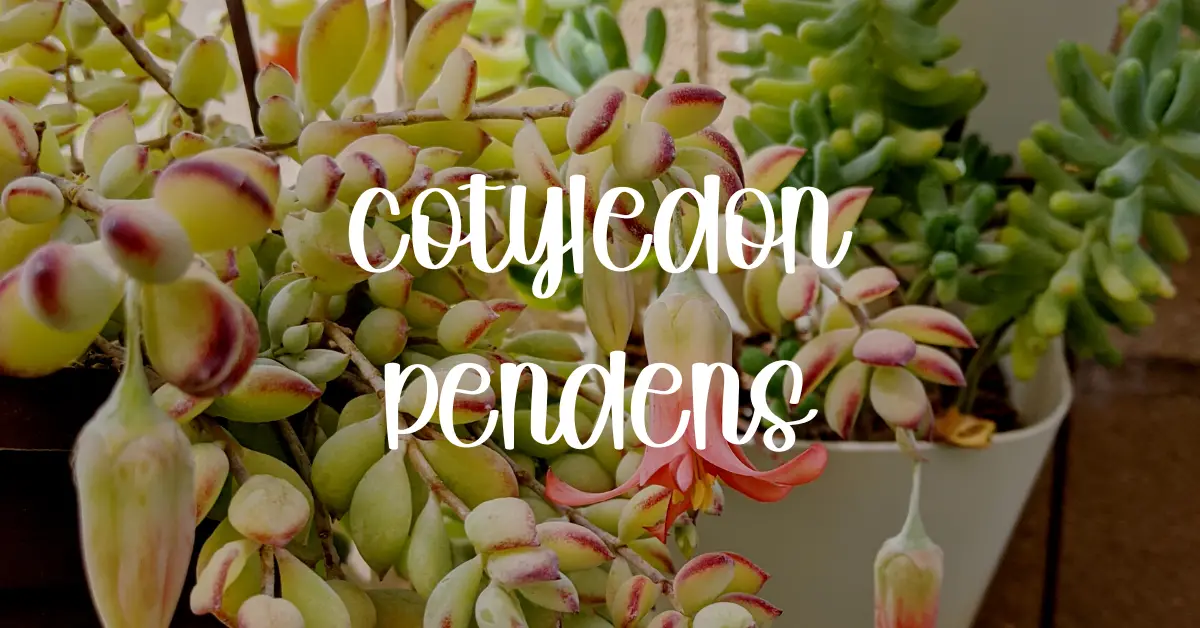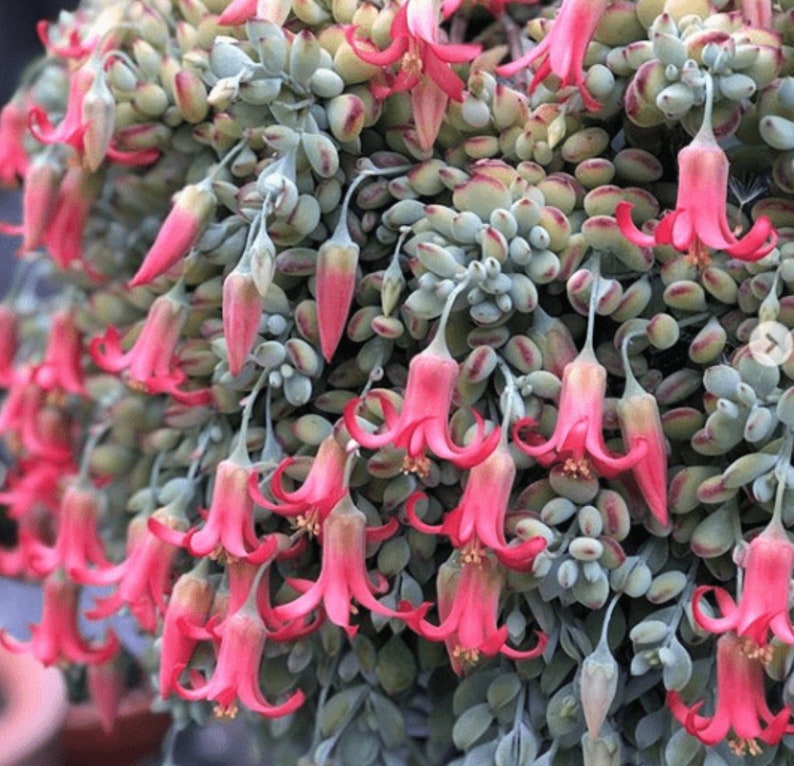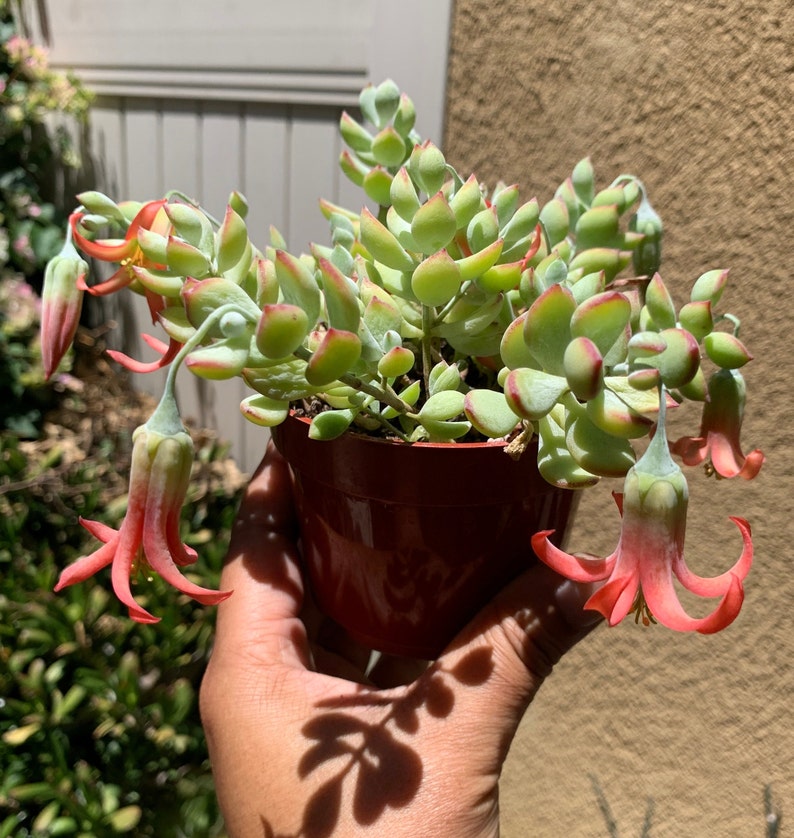Cotyledon Pendens, also renowned as ‘Cliff Cotyledon’, stands as a captivating succulent treasure, perfectly suited for any drought-resistant garden. Originating from the Eastern Cape Province of South Africa, this remarkable Cotyledon species thrives gracefully on rugged cliffs and rocky ledges. Embracing cascading stems and delicate light green leaf tips, the Cotyledon Pendens emerges as an exquisite choice for hanging baskets, container gardening, rock gardens, xeriscaping, and even as a splendid ground cover. Dive into this comprehensive guide to unveil the secrets of nurturing and flourishing with this remarkable succulent.
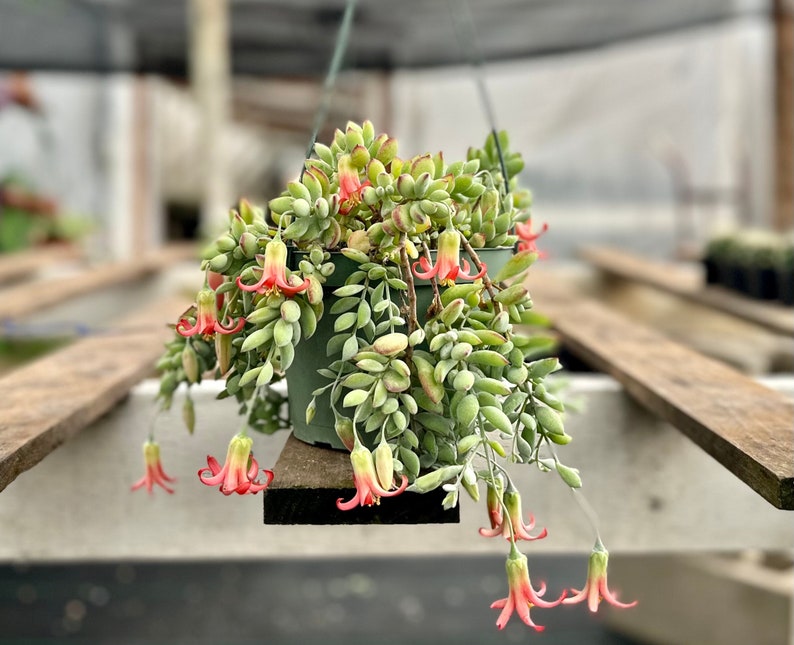
Source: Etsy
Dig in!
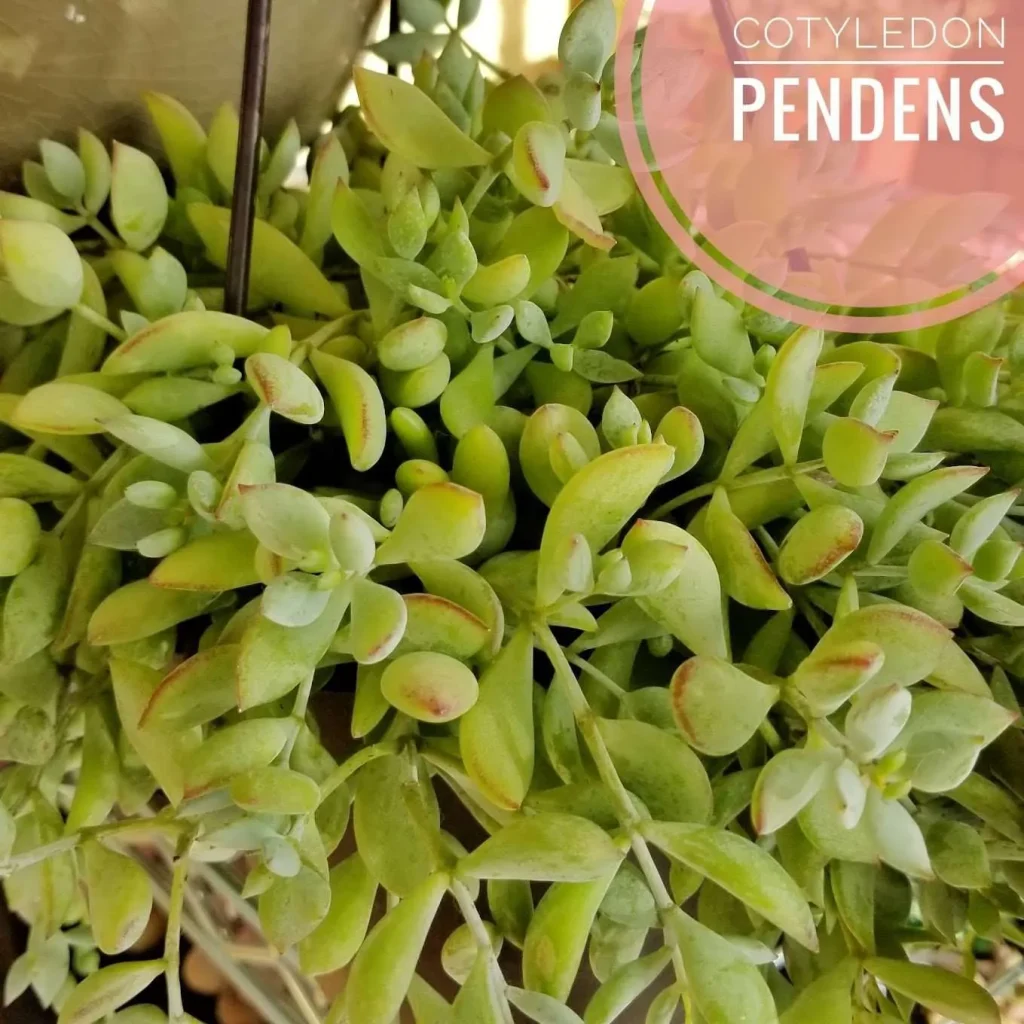
Unraveling its Natural Habitat and Monikers
In its natural habitat, Cotyledon Pendens gracefully adorns vertical rock facades and dramatic cliffsides. This positioning exposes the succulent to radiant sunlight while enabling swift water drainage from its roots. The species bears the moniker “pendens,” a nod to its gracefully hanging stems. Among its other popular aliases are Cliff Cotyledon, Hanging Cotyledon, and the evocative Spider Plant.
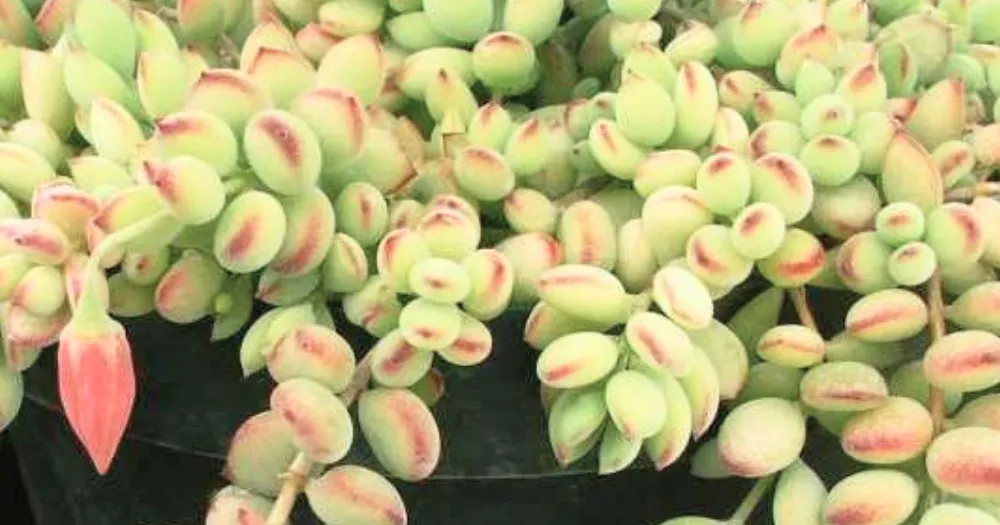
Distinctive Adaptations
Cotyledon pendens has orchestrated ingenious adaptations to thrive within its cliffside abode, each contributing to its unique charm:
- Trailing stems facilitating cascading down steep rock faces
- Thick, succulent leaves adept at water storage
- Delicate bristles on leaves, adroitly capturing moisture from mist and dew
- A tenacious taproot anchoring the plant securely within rock crevices

Source: Etsy
These adaptive traits set Cotyledon Pendens apart from its succulent counterparts, which often conform to a compact rosette structure. The elegantly hanging stems and its ability to cling to precipitous cliffs exemplify its distinctive aesthetic and growth demeanor.
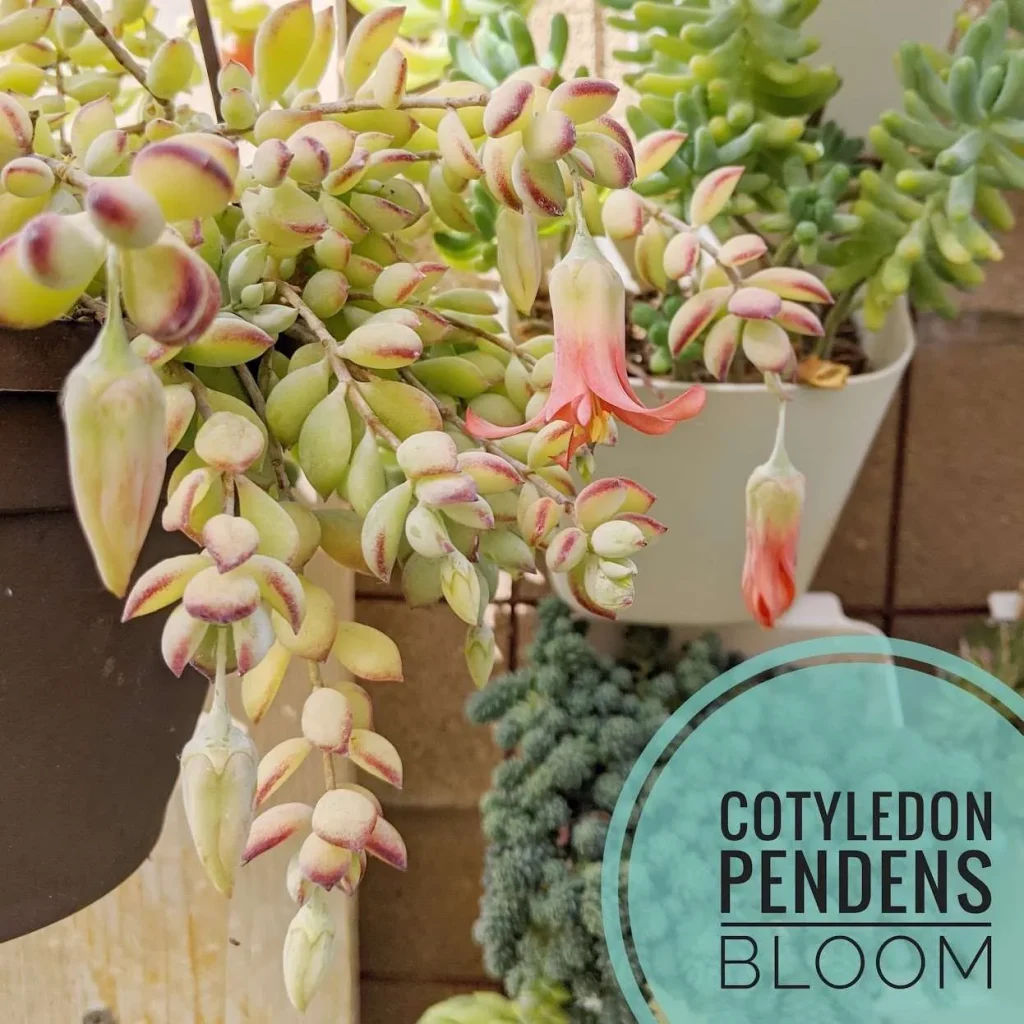
A Glimpse into Appearance and Growth
Cotyledon Pendens boasts trailing stems that can extend up to an impressive 60 cm in length. These stems present a pale green to pinkish hue, adorned with a delicate white powdery coat. Its teardrop or egg-shaped leaves, resplendent in light green, attain a length of approximately 2.5 cm. These leaves, positioned in pairs along the stems, exhibit dainty bristles along the edges. Exposure to abundant sunlight bestows upon them a captivating pinkish-red hue at their tips.
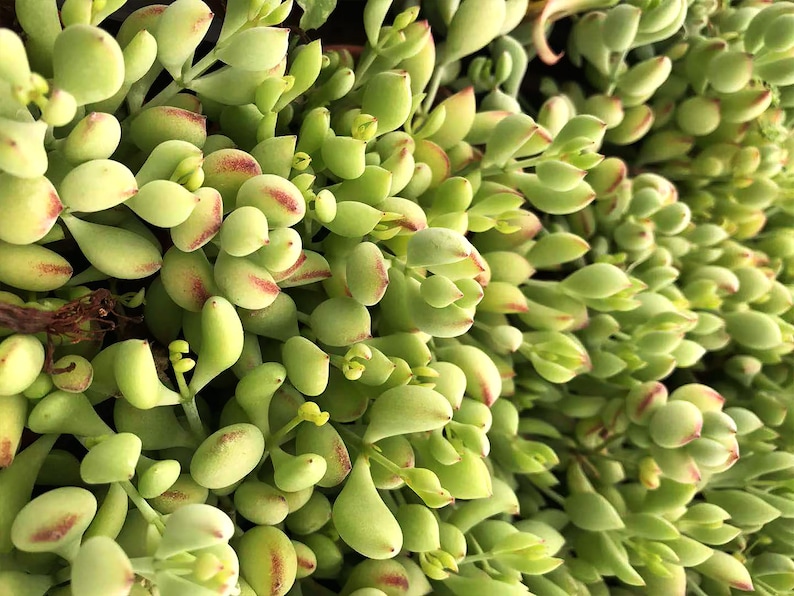
Source: Etsy
As the plant matures, its stature may reach heights of around 30 cm and widths surpassing 60 cm. Although its growth pace remains moderate, it gains momentum with the advent of spring and summer.
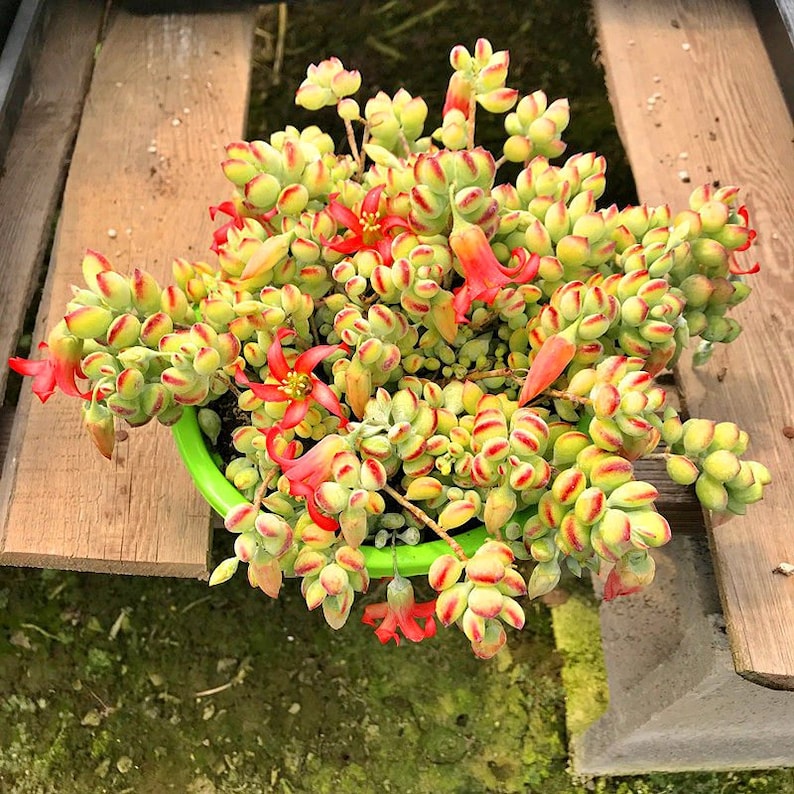
Source: Etsy
Adorned in Splendor: The Floral Display
From late spring to mid-summer, Cotyledon Pendens orchestrates a spectacle of elegance with pendulous clusters of bell-shaped flowers. These blooms dazzle in a vivid orange-red shade, punctuated by pale yellow throats. Warm temperatures and extended daylight hours during spring and summer serve as the triggers for this breathtaking blossoming. Birds and insects assume the role of pollinators, adding a harmonious touch to the succulent’s lifecycle.
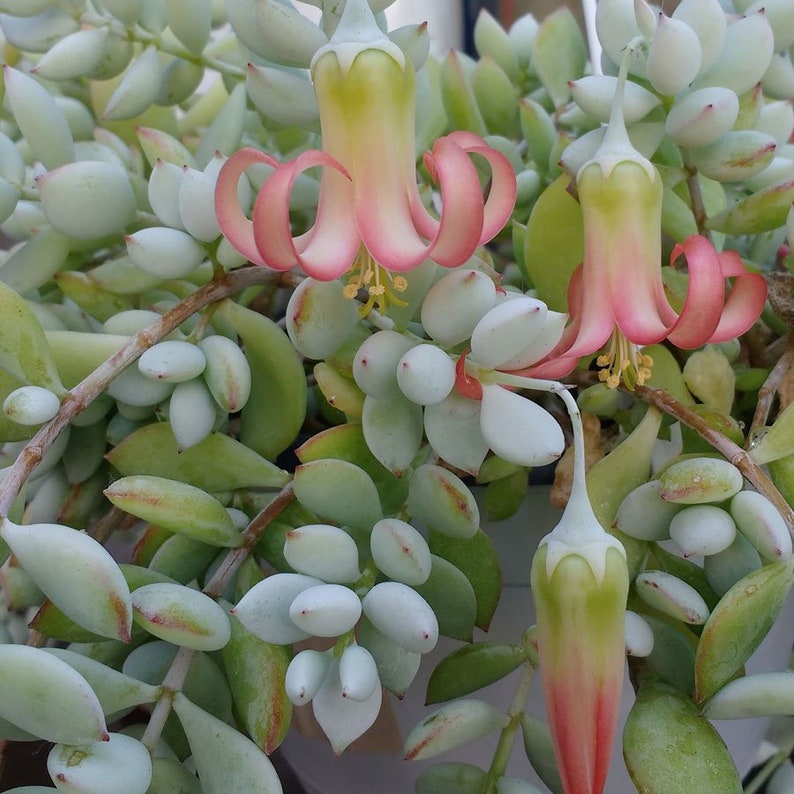
Source: Etsy
How to Get Cotyledon pendens to Bloom
- Provide bright, indirect light. Cotyledon pendens likes lots of light to initiate flowering, but direct sunlight can burn the leaves. Place the plant in a bright window with indirect natural light.
- Maintain warm temperatures. Cotyledon pendens prefers warm conditions year-round with temperatures between 65 to 85°F. Provide supplemental heat if needed to keep temperatures in this range.
- Water regularly when actively growing. When the plant is in its growing cycle from spring to fall, water consistently every 1 to 2 weeks. Moisture plays a role in triggering blooms.
- Fertilize once a month during the growing season. Feed the plant with a liquid succulent fertilizer or cactus fertilizer from spring to fall. Fertilizer supplies the nutrients needed for bud and flower formation.
- Prune to promote new growth. Selectively trimming off spindly or crowded stems can stimulate branches to produce new growth and flower buds. Prune right after the plant flowers.
- Increase humidity. Higher humidity levels around 60 to 70% can aid in blooming for cotyledon pendens. Consider using a pebble tray or humidifier.
- Switch to a long day photoperiod. For some plants, increasing day length to at least 12 to 14 hours can induce flowering. Provide artificial light at night if needed.
- Allow the soil to dry slightly between waterings. Overly wet soil can inhibit blooming, so only water when the top 1 to 2 inches of soil are slightly dry.
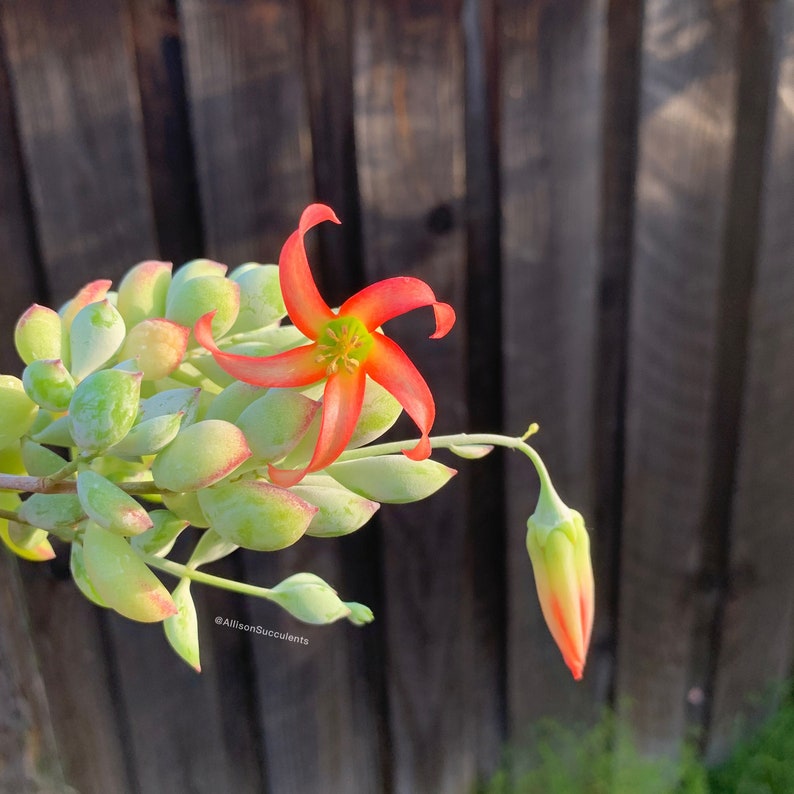
Source: Etsy
With adequate light, temperature, fertilizer and pruning, cotyledon pendens should form flower buds within a few months. The flowers are yellow and tubular, with 5 lobes at the end. Once your plant begins blooming, maintain the same care routine to prolong flowering. Let me know if you have any other questions.

Illuminating its Light Requirements
Thriving under the sun’s warm embrace, Cotyledon Pendens flourishes in full sunlight. To ensure its vitality, a minimum of 6 hours of direct sunlight is recommended daily. Should it be nurtured indoors, a consistent commitment to providing ample brightness is imperative.
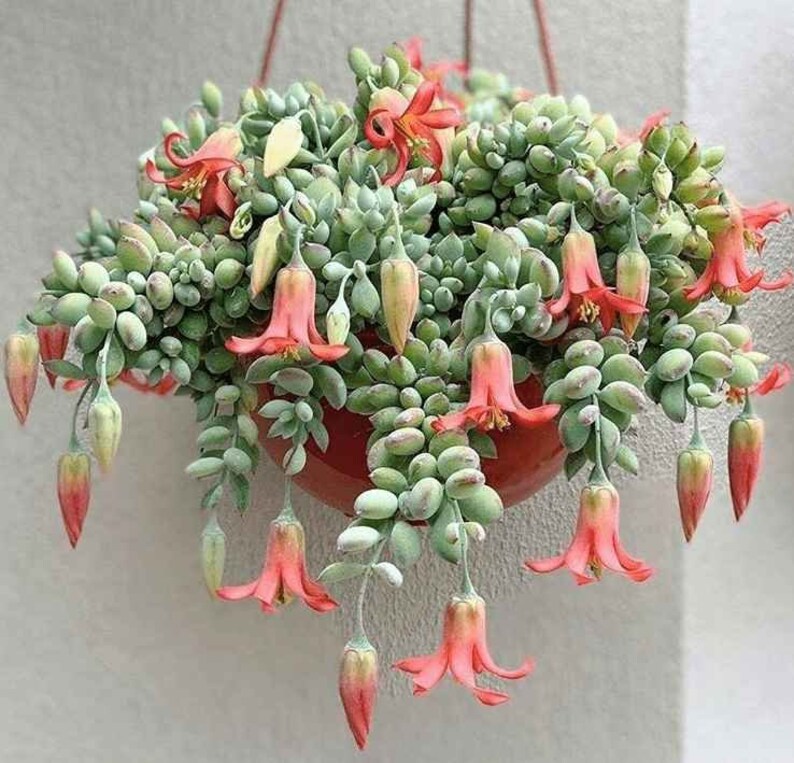
Source: Etsy
Insufficient sunlight may lead to elongated stems and leaf loss, potentially causing the dissipation of the characteristic powdery coating on the leaves.
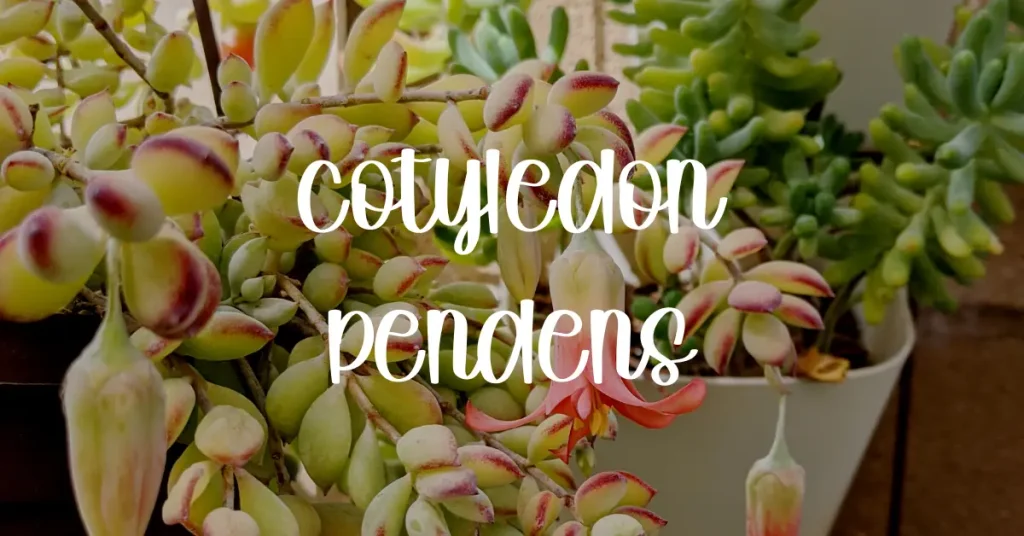
Surviving the Chill: Cold Hardiness Insights
Cotyledon Pendens displays a preference for balmy temperatures, and it staunchly opposes any encounter with frost. Exposure to temperatures plummeting below 30°F (-1°C) can result in harm. For those residing within the realms of zones 9-11, the succulent may endure outdoor conditions throughout the year. Conversely, in regions with colder climates, it’s advisable to embrace its presence as an indoor houseplant or to provide shelter indoors before the first frost blankets the earth. To mimic its natural habitat during winter, maintain a cooler environment ranging from 50-60°F (10-15°C) for the plant’s abode.
Guiding the Path to Care and Adequate Hydration
Nurturing Cotyledon Pendens is a joyful endeavor, contingent upon ensuring excellent drainage. Employ a potting mix with a sandy composition, and ensure the chosen container boasts sufficient drainage holes. Watering becomes necessary when the top layer of soil manifests dryness. The active growth period of spring and summer may demand watering intervals as frequent as every 7-10 days. In contrast, the dormant winter season warrants a reduction to intervals of approximately 3-4 weeks.
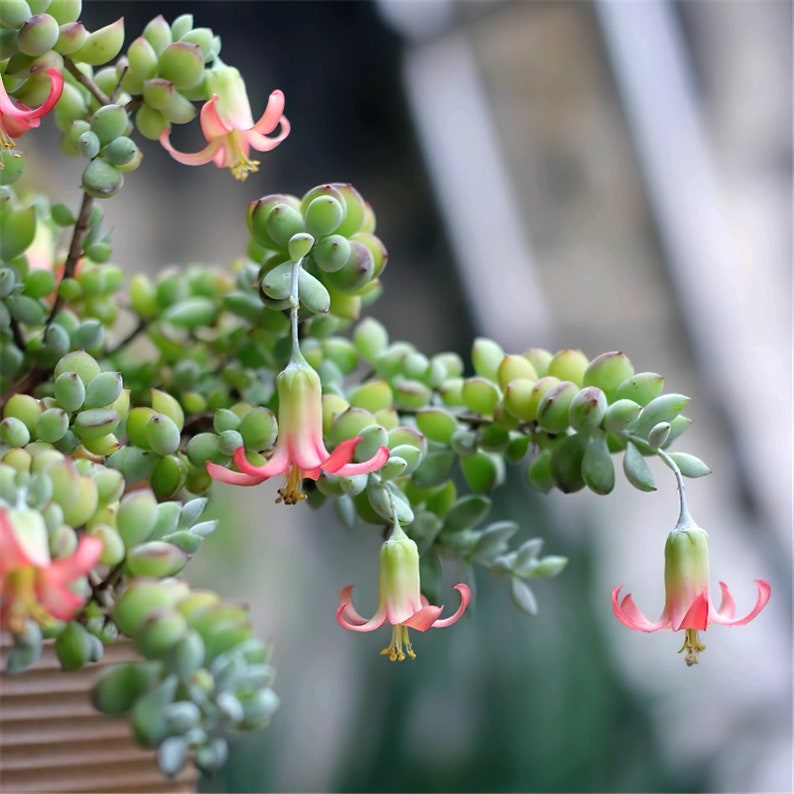
Source: Etsy
Striking a balance is imperative, avoiding excessive watering that may lead to waterlogged roots and subsequent rot. Grant the soil an opportunity to thoroughly dry between watering sessions.
Temperature Tolerance and its Melodic Harmony
Cotyledon Pendens thrives within daytime temperature ranges of 70-80°F (21-27°C), while nighttime temperatures of 60-65°F (15-18°C) offer the ideal nocturnal symphony. The succulent remains resilient even when exposed to highs reaching 90°F (32°C).
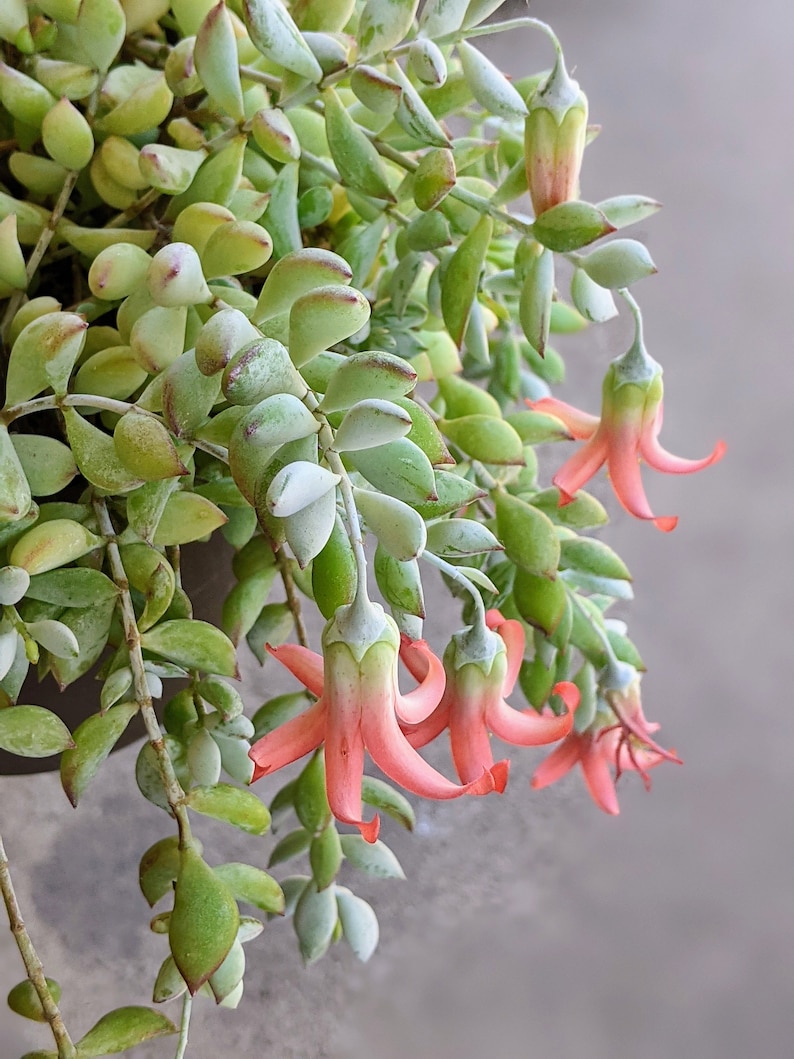
Source: Etsy
Averse to temperatures plunging beneath 30°F (-1°C), Cotyledon Pendens vehemently resists frost-induced damage. Additionally, it shies away from heightened humidity, requiring a drier ambiance to flourish.
Outdoor Grace: Tending to its Alfresco Needs
Within frost-free regions, Cotyledon Pendens graces outdoor spaces throughout the seasons. Optimal sites bathe the succulent in full sunlight, while the soil should be airy and quick-draining, as befitting its nature. Between waterings, allow the soil to embrace dryness, preventing direct contact with the leaves. While the succulent can endure mild rain, extended periods of water accumulation should be avoided. Enhance its outdoor experience by introducing a balanced liquid fertilizer every 2-3 months during its vibrant growth phase. As winter approaches, temporarily suspend fertilization.
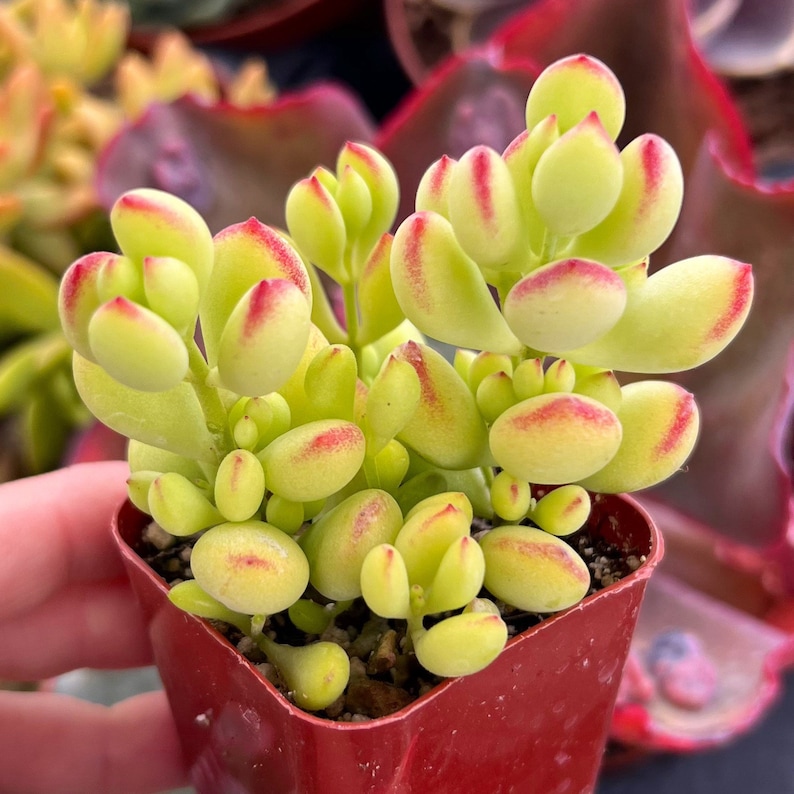
Source: Etsy
Fertilization
Embrace the task of fertilizing Cotyledon Pendens periodically during its active growth span spanning from spring to fall. Opt for a diluted, balanced houseplant fertilizer or one specially formulated for succulents. Abide by intervals of every 2-3 months, exercising caution against overzealous fertilization that may incite leaf scorch or excessive growth.

Succulent fertilizer available to purchase on Etsy.
How to Propagate Cotyledon pendens ‘Cliff Cotyledon’
Cotyledon Pendens beckons forth the possibility of propagation through stem cuttings or leaves.
Stem cuttings:
- Arm yourself with a sharp, sterile knife to sever a stem section of considerable length.
- Allow the freshly cut end to desiccate and callous over for several days.
- Following this, gently plant the stem in a sandy potting mix, maintaining a slightly moist environment during its rooting phase.
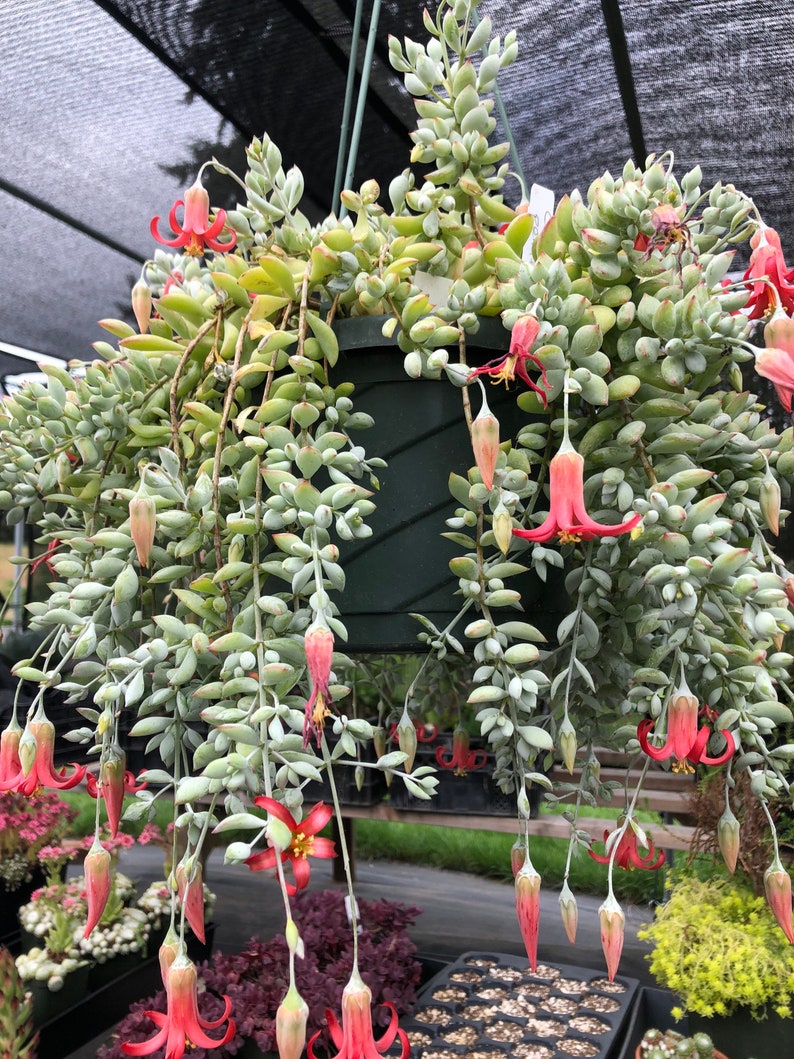
Source: Etsy
Leaf cuttings:
- Delicately detach a leaf and permit the severed end to callous over.
- Nestle the calloused end into a potting mix, nurturing the emergence of baby plantlets at the point of contact between the leaf and stem.
Crafting Elegance: The Art of Pruning
Although not mandatory, periodic pruning can instill a sense of control over size and shape. Employ well-maintained garden shears to delicately remove overgrown stems or sections afflicted by damage. Spring and early summer offer an opportune time for pruning endeavors. Caution is advised against excessive pruning, preserving the plant’s innate vitality.
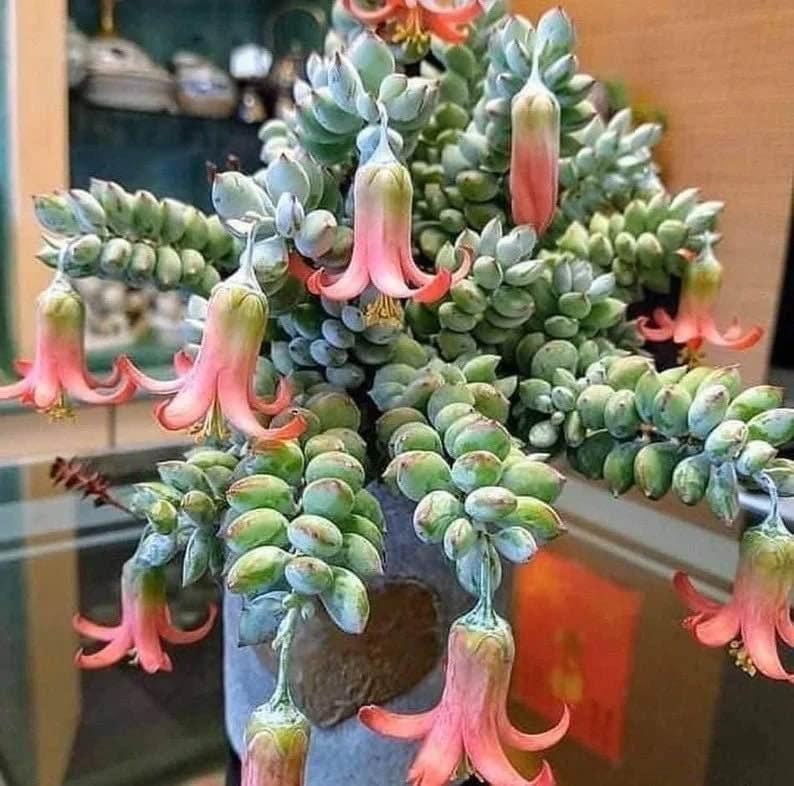
Source: Etsy
Unmasking Potential Adversities: Common Issues
The journey of nurturing Cotyledon Pendens may encounter hurdles including:
- Root rot, stemming from excessive watering
- Leaf shedding as a consequence of inadequate light
- The infiltration of mealybugs, aphids, or spider mites
- Sunburn, a manifestation of intense sunlight exposure
Mitigation and prevention entail adopting a diligent approach to care. Implement increased airflow and heightened exposure to sunlight to ward off potential pests from afflicting the leaves.

Source: Etsy
Why are my cotyledon pendens leaves falling off?
There are a few potential reasons why the leaves on your cotyledon pendens (necklace vine) may be falling off:
- Overwatering – This is often the most common cause of leaf drop in succulents like cotyledon pendens. Succulents need well-draining soil and infrequent watering. By watering too frequently or leaving the soil constantly moist, the roots can become rotten and leaves will start to drop.
- Underwatering – On the other end of the spectrum, severely underwatering the plant can also cause leaves to drop. Make sure you’re watering your cotyledon pendens at least once every 2 weeks.
- Direct sun exposure – Too much intense, direct sunlight can burn the leaves of cotyledon pendens, causing them to yellow and fall off. Only gradually introduce these succulents to more sunlight.
- Cold temperatures – Exposure to temperatures below 50 degrees Fahrenheit for extended periods can lead to leaf drop in cotyledon pendens. Providing insulation during colder times of year may help.
- Pest infestation – Mealybugs, scales or spider mites feeding on your plant can cause leaves to fall prematurely. Check the leaves and stems thoroughly for any signs of pests.
- Nutrient deficiency – Especially if overwatered, your cotyledon pendens may not be getting enough nutrients from the soil. Foliar feeding with a liquid fertilizer or repotting in fresh potting mix could help.
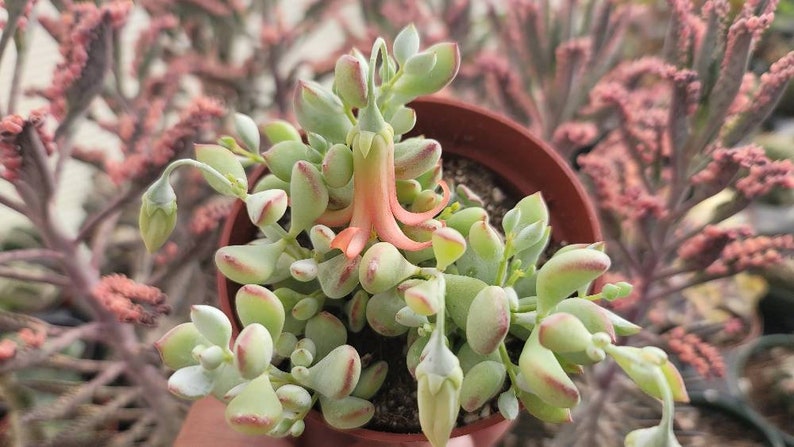
Source: Etsy
Start by checking your watering schedule and amount of sunlight the plant is getting. Look closely for any signs of pests. Ensure the plant is in well-draining soil and the pot has a drainage hole. If the problem continues, consider repotting the plant to increase the odds of root recovery. Hopefully these tips will help target the cause and prevent further leaf drop in your Cotyledon pendens.
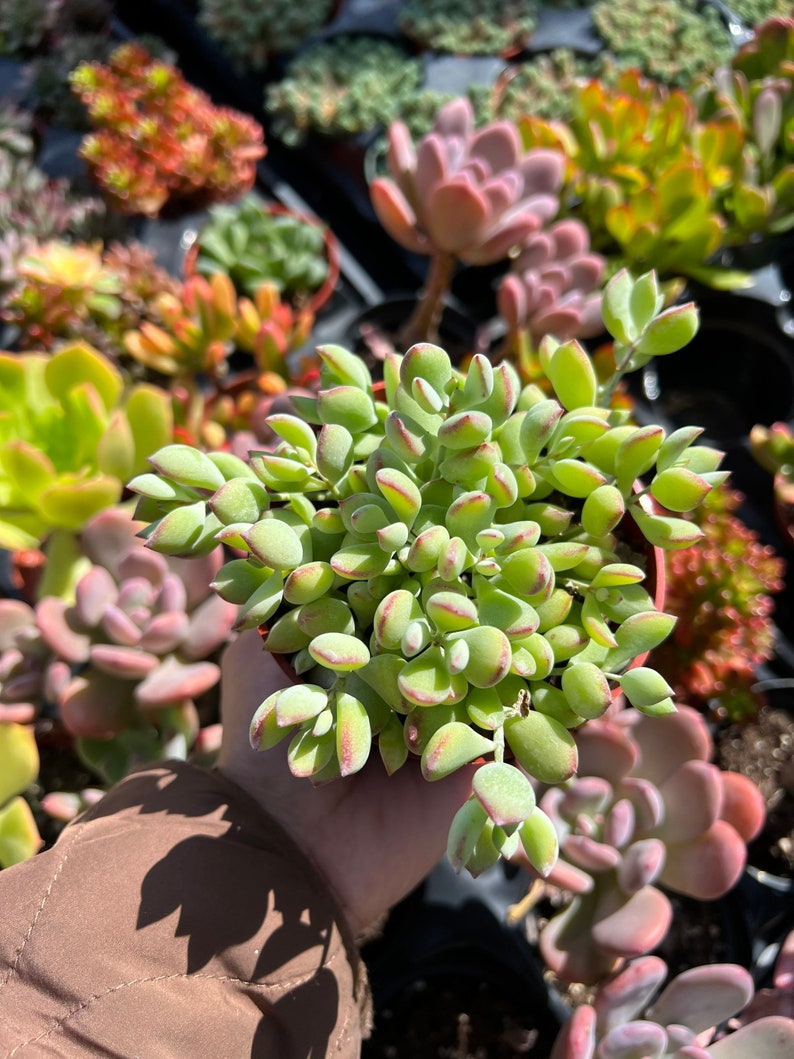
Source: Etsy
Unveiling Harmless Beauty: Understanding Toxicity
Cotyledon Pendens extends its benign presence to humans, felines, and canines alike, certified safe by the ASPCA. It graces households housing children and pets with an aura of untainted beauty and tranquility.
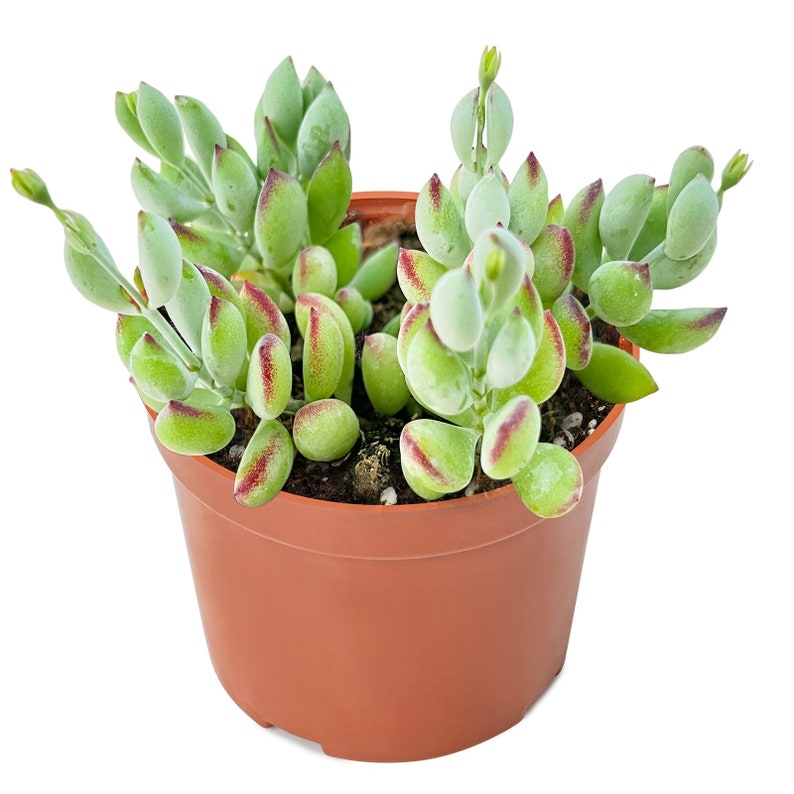
Source: Etsy
Embracing Dormancy: Insights into Seasonal Tranquility
As winter unfurls its chilly embrace, Cotyledon Pendens embarks upon a period of dormancy. Intermittent exposure to lower temperatures and diminished daylight hours prompt a deceleration in growth. This phase translates to reduced watering requirements and mandates a temporary suspension of fertilization.
Decoding its Etymology
The genus name “Cotyledon” draws inspiration from the Greek term signifying “cup” or “depression,” a homage to the distinctive cupped form of its leaves. The species designation “pendens” elegantly conveys “hanging” or “pendulous” in the language of Latin.
Embrace the Epitome of Grace
Incorporating Cotyledon Pendens into one’s botanical ensemble unveils a breathtaking vista of pendulous stems adorned with delicately tinged leaves. Optimal growth hinges upon providing the succulent with a nurturing environment encompassing warm temperatures, efficient drainage, and abundant luminosity. A resplendent reward awaits – vibrant bell-shaped flowers of orange-red hues, gracefully adorning the landscape during the summertime. Whether suspended in a hanging basket or nestled within a rocky garden, Cotyledon Pendens embodies the essence of its cliff-dwelling heritage, painting nature’s canvas with unparalleled elegance.
Are you ready to add Cotyledon pendens to your succulent collection?
Click on the image below and buy one from a small business on Etsy.


